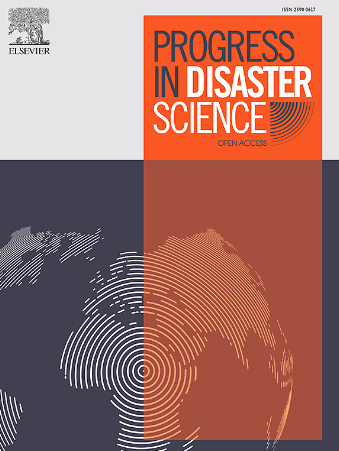An integrated coastal exposure modelling approach to assist mangrove ecosystem based disaster risk reduction (Eco-DRR) in Tamil Nadu, India
IF 3.8
Q3 ENVIRONMENTAL SCIENCES
引用次数: 0
Abstract
This paper attempts to measure the role of the mangrove ecosystem in minimizing coastal exposure using the InVEST (V3.9.0) Coastal Vulnerability Assessment (CVA) model in Tamil Nadu, India. The result depicts that the exposure value of the Tamil Nadu coastal stretch varies from 1.71 to 4.78 on a five-point scale. More than half of the coastal segments in Tamil Nadu have high to very high exposure, whereas nearly 10 % of the coastal segments are recorded under very low exposure. The model demonstrated that having the existing mangrove patches in the Pichavaram and Muthpet regions significantly reduces the exposure value from 3.47 to 2.80 and 4.78 to 2.10, respectively. Further, the present study modelled the impact of future Sea Level Rise (SLR) on the mangrove ecosystems using a static inundation modelling approach under different Representative Concentration Pathways (RCPs). Results depict a significant loss of mangrove habitats from 9.55 % to 58.33 % and 20.88 % to 48.02 % for both the Pichavaram and Muthupet mangrove regions, respectively, by the end of this century (2100). Since the coastal hazards are expected to intensify, our results can benefit policymakers by highlighting the prioritized areas and location-specific interventions for fostering Ecosystem-based Disaster Risk Reduction (Eco-DRR) strategies.
印度泰米尔纳德邦基于红树林生态系统的灾害风险减少(Eco-DRR)的综合沿海暴露建模方法
本文试图利用InVEST (V3.9.0)沿海脆弱性评估(CVA)模型来衡量印度泰米尔纳德邦红树林生态系统在减少沿海暴露方面的作用。结果显示,泰米尔纳德邦沿海地区的暴露值在1.71至4.78的五级范围内变化。泰米尔纳德邦一半以上的沿海地区暴露程度高或非常高,而近10%的沿海地区暴露程度很低。模型表明,在Pichavaram和Muthpet地区存在红树林斑块,暴露值分别从3.47降低到2.80和4.78降低到2.10。此外,本研究利用不同代表性浓度路径(rcp)下的静态淹没模拟方法模拟了未来海平面上升(SLR)对红树林生态系统的影响。结果表明,到本世纪末(2100年),Pichavaram和Muthupet红树林区红树林生境的损失分别为9.55% ~ 58.33%和20.88% ~ 48.02%。由于沿海灾害预计会加剧,我们的研究结果可以通过突出优先区域和特定地点的干预措施来促进基于生态系统的减灾战略,从而使政策制定者受益。
本文章由计算机程序翻译,如有差异,请以英文原文为准。
求助全文
约1分钟内获得全文
求助全文
来源期刊

Progress in Disaster Science
Social Sciences-Safety Research
CiteScore
14.60
自引率
3.20%
发文量
51
审稿时长
12 weeks
期刊介绍:
Progress in Disaster Science is a Gold Open Access journal focusing on integrating research and policy in disaster research, and publishes original research papers and invited viewpoint articles on disaster risk reduction; response; emergency management and recovery.
A key part of the Journal's Publication output will see key experts invited to assess and comment on the current trends in disaster research, as well as highlight key papers.
 求助内容:
求助内容: 应助结果提醒方式:
应助结果提醒方式:


